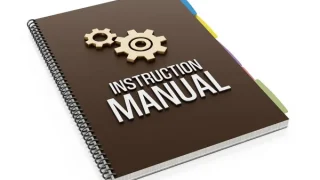Even though the term “manual” can mean different things, there are various ways to create one. I think the content you include depends on your purpose.
This time, I’d like to introduce four key points for creating a manual to automate your business, as we do at Kesae Total balance.
Point 1: Eliminate Negatives
While many people strive to provide better service through trial and error, my approach is different.
Instead of focusing on adding positive points, I emphasise not accumulating negative points. This is arguably the most important aspect of a service manual.
The reason it’s so important is that negative experiences leave a stronger impression than positive ones. No matter how many good things you do, one bad experience can ruin everything. Bad impressions tend to outweigh good ones.
Think about it from the customer’s perspective. When treated well, they might think, “What a nice staff member.” But a bad experience makes them quickly decide, “That was unpleasant, I won’t come back.”
Naturally, customers have plenty of other similar services to choose from. They can easily switch to another service that suits them better.
Therefore, those providing the service should focus on thoroughly eliminating negatives rather than just trying to improve. Only after eliminating negatives should you focus on the positives.
Point 2: Focus Solely on Increasing Repeat Rates
Improving repeat rates is essential for business growth. Mastering this can ultimately reduce the need for attracting new customers.
To increase repeat rates, it’s crucial to consider:
- “What causes customers to leave?”
More than “How to get them to repeat?”.
This ties back to eliminating negatives that I was talking about before. By identifying and fixing the causes of customer loss, you reduce the chances of losing customers, naturally increasing repeat rates.
Some manuals include how to sell in-store products or upsell courses, but this is a bad move.
While suggesting the perfect product can build trust, you must remember that some customers dislike being upsold. The focus should be on “What causes customer loss?”. Therefore, to increase repeat rates, it’s better not to push sales. Create a manual that prevents selling to those who don’t want to buy.
The same logic applies to upselling courses. Additionally, you must understand the difference between changing menus to meet customer needs and upselling to increase revenues. Misunderstanding this leads to a manual that doesn’t enhance repeat rates.
If repeat rates increase, so will sales over time. Avoid creating manuals focused on short-term profits. Always think about what might make customers uncomfortable, what causes them to leave, and what you should stop doing to prevent customer loss.
Point 3: Maintain a Level that Doesn’t Rely on Individual Abilities
When aiming for scale and automation, it’s necessary to provide a stable supply of services. Raising the standard for service level too high can create a business model that’s hard to scale.
As the number of people increases, their abilities will vary. Some are highly capable, and some are not. Some learn quickly, and some do not.
Setting the standard for service level too high results in inconsistency in quality and delays in supply due to varying learning speeds.
The issue isn’t the varying abilities of individuals but the inability to provide a stable supply. It’s crucial that everyone grows at the same rate and provides the same quality of service.
A manual that maintains a consistent service level makes it easier to provide stable service.
Point 4: Align with the business Selling Points
Unless staff are attracting customers individually via Social Media, customers visit based on the business information. They are interested in, sympathise with, and seek what the business offers. Hence, the manual must align with the business selling points.
For Kesae Total Balance, the manual focuses on improvement for body balance. We don’t offer or allow services outside this focus.
Creating a manual based on individual skills or preferences can lead to a mismatch between what customers seek and what is provided, causing customer loss. Since it’s not a personal product, it’s important to decide on the services provided and ensure everyone offers the same service.
A Properly Developed Manual Dramatically Reduces Business Management Costs
- Eliminate the causes of customer loss
- Provide stable services
- Offer the services customers seek
By focusing on these points, Kesae Total Balance has created manuals that allow us to automate and expand our business nationwide.
Our manuals control service quality and staff training, reducing management costs to near zero. Manuals solve many problems business owners face.





